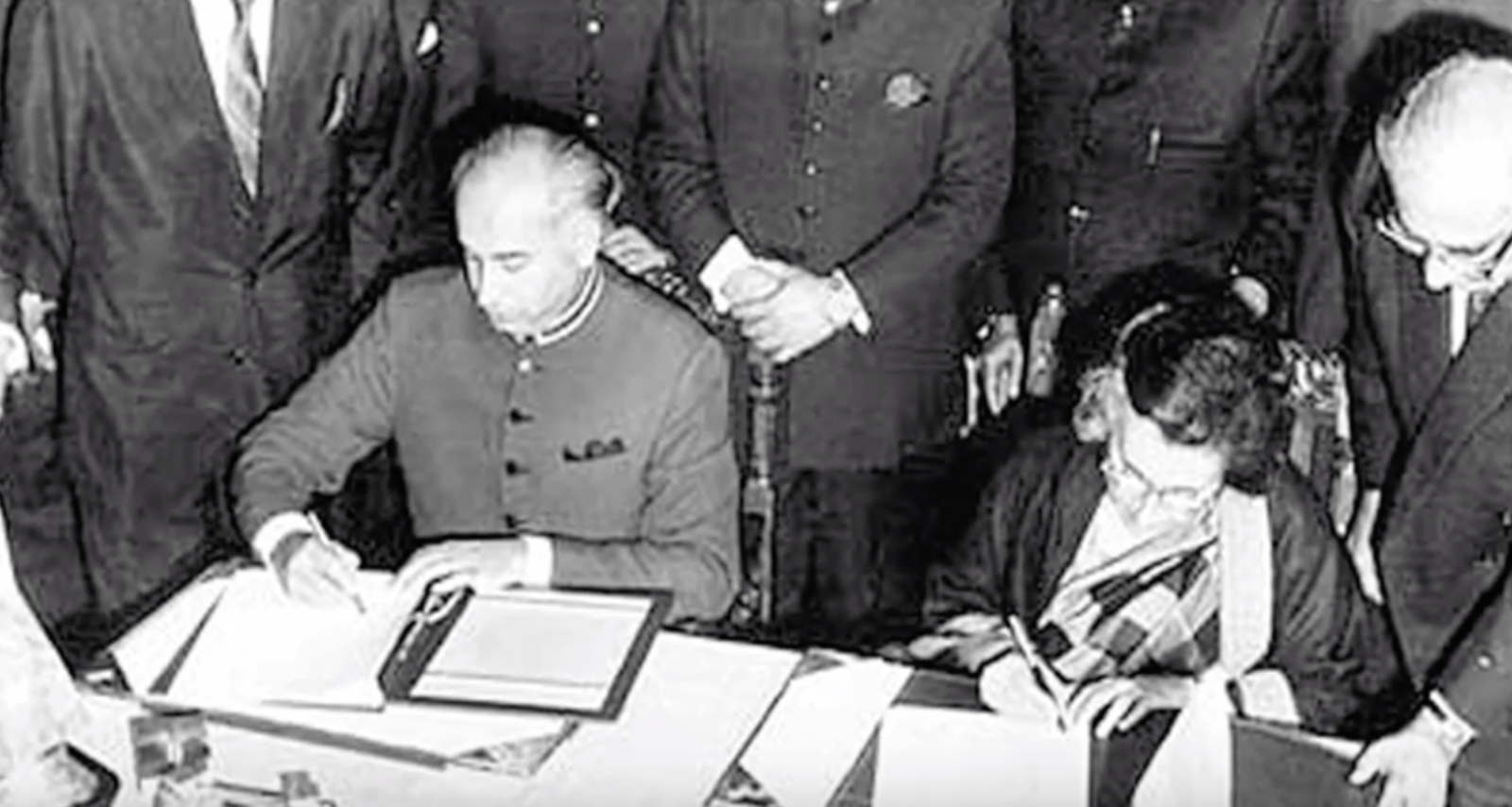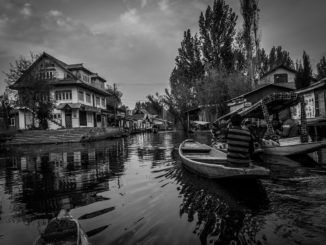 India’s Prime Minister Narendra Modi and US President Donald Trump have much in common, not least extensive use of Twitter to communicate their thoughts, policies and intentions. The arrangement for a Modi-Trump meeting on September 22 in Houston Texas, at a rally of Indian-Americans, known as “Howdy Modi!” was greeted enthusiastically by India’s leader (“The special gesture of President Trump to join us in Houston highlights the strength of the relationship and recognition of the contribution of the Indian community to American society and economy”) and it is likely he was confident that Trump would not refer to him, as he did to Egypt’s General Abdel Fattah Al Sisi, as “my favourite dictator.”
India’s Prime Minister Narendra Modi and US President Donald Trump have much in common, not least extensive use of Twitter to communicate their thoughts, policies and intentions. The arrangement for a Modi-Trump meeting on September 22 in Houston Texas, at a rally of Indian-Americans, known as “Howdy Modi!” was greeted enthusiastically by India’s leader (“The special gesture of President Trump to join us in Houston highlights the strength of the relationship and recognition of the contribution of the Indian community to American society and economy”) and it is likely he was confident that Trump would not refer to him, as he did to Egypt’s General Abdel Fattah Al Sisi, as “my favourite dictator.”
But Mr Modi is behaving more and more like a dictator, as evidenced by his actions in Indian-administered Kashmir.
Modi’s August decision to unilaterally change the status of the territory is only one of the many disasters to befall it in the seventy years since the Muslim majority state, the fiefdom of a Hindu Maharaja, was allocated to India by the colonial British who in 1947 had been forced to grant independence to India, resulting in creation of the nations of Pakistan and India which continue to disagree about the status of region and even about how to seek resolution.
One most sensitive aspect of the Kashmir dispute is the matter of bilateralism as interpreted by India. This was indicated, for example, by the Chandigarh Tribune which stated on 8 August that “UN chief Antonio Guterres has recalled the Simla Agreement of 1972, a bilateral agreement between India and Pakistan that rejects third-party mediation in Kashmir after Islamabad asked him to play his ‘due role’ following New Delhi’s decision to revoke Jammu and Kashmir’s special status.” The contention that the Simla Accord nullifies third party mediation is a drumbeat in India and is retailed in Western media.
But the Simla Agreement does not exclude or in any way invalidate mediation concerning Kashmir or any other dispute between India and Pakistan, as it lays down that “the principles and purposes of the Charter of the United Nations shall govern the relations between the two countries” which “are resolved to settle their differences by peaceful means through bilateral negotiations or by any other peaceful means mutually agreed upon between them.”
Successive Indian governments have wilfully ignored or chosen to misinterpret the phrase “or by any other means” simply because it makes nonsense of the contention that Simla decrees bilateralism. It is disturbing that India should reiterate that its “consistent position [is] that all outstanding issues with Pakistan are discussed only bilaterally.”
It is obvious why India refuses to countenance mediation — because any independent, objective mediator would make the point that UN Security Council agreements still apply to the territory, and that none of them have been annulled or diluted. As the BBC noted, “In three resolutions, the UN Security Council and the United Nations Commission in India and Pakistan recommended that as already agreed by Indian and Pakistani leaders, a plebiscite should be held to determine the future allegiance of the entire state.”
There is nothing wrong with mediation, and when bilateral confrontation hasn’t worked for seventy years in solving a dispute, it might be a good idea to try some other way.
At the moment, however, India’s government has no intention of trying anything but coercion as regards Indian-administered Kashmir and its unfortunate citizens, and has imposed a draconian regime of direct rule on what is now a “Union Territory”.
The decision by Prime Minister Modi to annul Article 370 of the Constitution and thus abolish the special status of Indian-administered Kashmir was yet another stride in his ultra-nationalist campaign to reinforce supremacy of Hindus. Since 1948 the Article has meant that the territory’s citizens have their own Constitution, their own laws, and the right to property ownership, with non-Kashmiris not being permitted to buy land. It is this last that is of major concern, because Hindus will now be encouraged to buy land and property, and gradually (or perhaps not-so-gradually) displace the Kashmiris.
It is little wonder that so many Kashmiris distrust and detest their Hindu overlords who are behaving in a fashion that would have excited the admiration of the most rigid colonial autocrat in the years of the British Raj.
Modi promised that his unilateral action in imposing direct rule on the region would bring “new opportunity and prosperity to the people” — but if he thought that his announcement would be greeted with enthusiasm and that his policy would indeed benefit Kashmiris, then why did he send “tens of thousands of Indian troops . . . in addition to the half a million troops already stationed there”? Why has the Central Government “shut off most communication . . . including internet, cellphone and landline networks”?
Arrest and detention without trial of over 3,000 Kashmiris added to overall fear and resentment, and the treatment of former chief minister Farooq Abdullah attracted attention in international media. It was reported that on 19 September “the 42nd day of the ongoing Kashmir lockdown . . . Farooq Abdullah was arrested under the Public Safety Act, a law that allows detention without trial for two years . . . Abdullah, 83, has been put under arrest at his home in the main city of Srinagar, from where he governed the disputed state as chief minister for three terms.”
There was no mention of Abdullah’s detention at the ‘Howdy Modi’ rally in Texas on 22 September, when President Trump “sat in the front row as the Indian prime minister told cheering crowds his decision to remove all autonomy from Indian-administered Kashmir would bring progress and better rights for its people,” and it seemed that Trump endorsed Modi’s oppression in the territory. But later he had second thoughts about what is going on in locked-down Kashmir.
In July President Trump said Modi had asked him if he would “like to be a mediator, or arbitrator” concerning Kashmir and he replied “If I can help, I would love to be a mediator.” This was most strongly denied by Foreign Minister Subrahmanyam Jaishankar who told parliament that “The US president made certain remarks to the effect he was ready to mediate if requested by India and Pakistan. I categorically assure the house that no such request has been made by the prime minister.” And there the matter was laid to rest — until once again the US president had thoughts about Kashmir.
After the Howdy Modi carnival and immediately before meeting with Pakistan’s Prime Minister Imran Khan on 23 September, Trump was asked by a reporter if he was concerned about the human rights situation in Kashmir and replied “Sure. I’d like to see everything work out. I want it to be humane. I want everybody to be treated well. You have two big countries, and they’re warring countries and they’ve been fighting.”
He continued that “I heard a very aggressive statement yesterday from India, from the Prime Minister . . . it was a very aggressive statement, and I hope that they’re going to be able to come together — India and Pakistan — and do something that’s really smart and good for both.” When asked directly about mediation he was positive in declaring that if both countries wished it, “I am ready, willing, and able.”
So, for the moment at least, President Trump disapproves of human rights abuses by Indian armed forces in Kashmir and has reiterated his willingness to mediate over the disputed territory.
But his well-meaning overtures will have no effect. The military clampdown in Indian-administered Kashmir will continue until the Modi government is confident that the population is fully under control; and there is no possibility of mediation by Trump or anyone else being permitted by India. The ultra-nationalist Bharatiya Janata Party will continue to rule and attract ever more support from the Hindu majority, which is intent on displacing Muslims in Kashmir whose suffering will be ignored by the world at large. The outlook is dire.




Be the first to comment